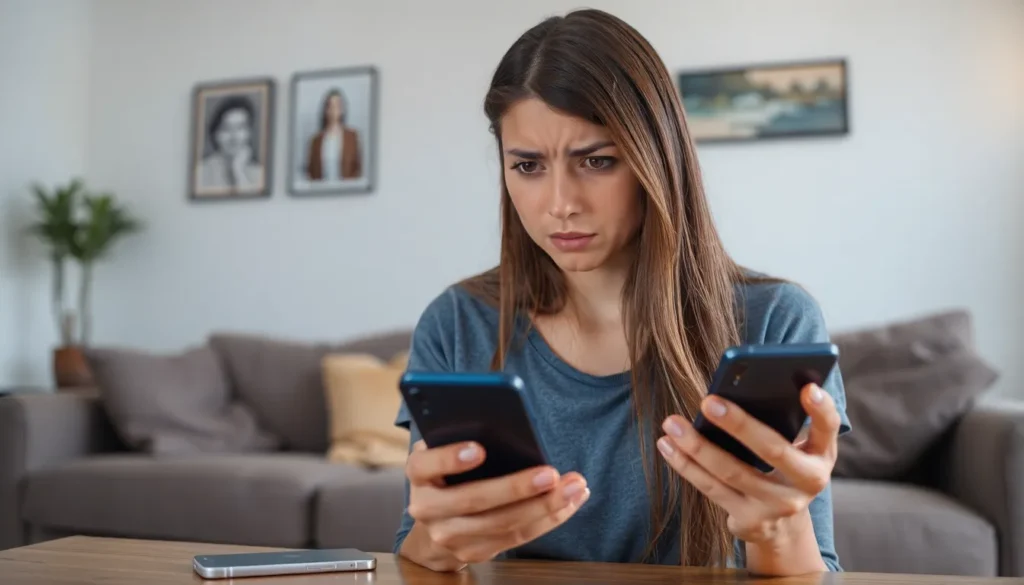Table of Contents
ToggleLost your iPhone and only have an Android on hand? Don’t panic just yet! The tech world can feel like a game of hide and seek, but what if your Android could play the role of the ultimate detective? While Apple’s Find My iPhone is designed to help Apple users, the question remains: can an Android swoop in to save the day?
Overview of Find My iPhone
Find My iPhone is a vital tool for Apple users, designed to locate lost or stolen devices. This app allows users to track their iPhones on a map, send remote commands, and even display messages on the screen. Location tracking occurs with the help of both GPS and Wi-Fi, ensuring accuracy in various environments.
Features include the ability to play a sound on the lost device, helping users locate it when nearby. Users can also remotely lock their devices to protect personal data, making it a critical security feature. If recovery seems impossible, the option to erase the iPhone’s data is available, safeguarding sensitive information.
Activation of Find My iPhone occurs through the device’s settings under the Apple ID. Users must enable this feature before experiencing a loss for it to function correctly. The app is compatible with devices running iOS 5 and later, supporting a wide range of iPhones and iPads.
Find My iPhone integrates seamlessly with iCloud, providing access to tracking from other Apple devices or via a web browser. Apple provides strong guidelines on using the service, emphasizing the importance of tracking setups and permissions.
Recovery relies on the device’s connection to a Wi-Fi network or cellular service. In cases where a device is offline, users see its last known location, offering a starting point for recovery efforts. While primarily designed for Apple devices, understanding its functionality remains crucial for those using alternative platforms.
Compatibility with Android Devices

Find My iPhone doesn’t directly work on Android devices. Apple designed the app specifically for iOS, limiting its functionalities for those using Android.
Limitations of Using Find My iPhone on Android
Using Find My iPhone on an Android device presents challenges. First, the app isn’t available for download on Android, making access impossible. Additionally, tracking features require an Apple ID for functionality, excluding Android users. Some websites offer limited tracking options, but they lack the comprehensive features found within Apple’s ecosystem. Without the app, users can’t access essential functions like remote locking or data erasure via an Android device. Thus, relying on Find My iPhone through an Android is ineffective and impractical.
Alternative Solutions for Android Users
Android users can utilize alternatives for locating lost Apple devices. One option is to visit iCloud.com from a web browser. This site enables users to access the Find My iPhone features with their Apple ID. Completing password and verification steps allows tracking through a map interface. Non-Apple tracking apps also exist, including Google Maps and GPS-tracking services, which can assist if the iPhone has location services activated. Friends or family with Apple devices can also help by using their Find My iPhone apps. These methods provide multiple avenues for locating an iPhone without needing direct access to the Find My iPhone app on Android.
Setting Up Find My iPhone on Other Devices
Users can still leverage Find My iPhone’s capabilities through alternative methods. While direct access on Android isn’t feasible, options remain for tracking an iPhone.
Steps for Apple Users
Apple users can access Find My iPhone even from non-iOS devices. First, visit iCloud.com and log in with your Apple ID. The website provides access to all Find My iPhone features. Users can view their device on the map. They can also send a sound, lock the device, or erase data directly from this interface. Such options ensure users maintain control over their lost iPhones through a web browser.
Options for Non-Apple Devices
Non-Apple device users have limited avenues to locate an iPhone. Using a web browser, visit iCloud.com to sign in with an Apple ID. Once logged in, access Find My iPhone features similar to Apple users. Alternatively, leveraging Google Maps requires the iPhone’s location services being active. Friends or family with Apple devices can also help. They can use their Find My iPhone app to locate your device, providing more options to recover a lost iPhone.
Pros and Cons of Using Find My iPhone on Android
Using Find My iPhone on an Android device presents distinct advantages and challenges. One positive aspect includes the ability to access some of Find My iPhone’s features via iCloud.com. Users can log in with their Apple ID, track their device on a map, and remotely trigger a sound to help locate it.
Accessing Find My iPhone through non-Apple devices offers a solution for those in urgent situations. If an iPhone is lost, checking iCloud.com becomes a viable option, allowing users to view the last known location. Friends and family with Apple devices also play a supportive role, as they can utilize their Find My iPhone app to assist others in tracking the lost device.
Despite these benefits, significant drawbacks occur when trying to use Find My iPhone on Android. Limitations arise from the app’s unavailability on Android, restricting direct access to its features. Without the app, functions such as data erasure and remote locking are unavailable, leaving users with fewer control options.
Additionally, some features remain inaccessible unless using iCloud.com. If location services are off or the iPhone is turned off, finding it could become nearly impossible. Therefore, Android users rely heavily on alternative methods, such as Google Maps, to track devices if location services are activated.
Weighing the pros and cons reveals the complexities of using Find My iPhone on Android. While some features provide support, the substantial limitations can cause challenges in effectively tracking lost devices.
Navigating the loss of an iPhone while relying on an Android device can be challenging. While Find My iPhone isn’t directly available on Android, users can still utilize alternative methods to locate their devices. Accessing iCloud.com with an Apple ID allows for some tracking capabilities, providing peace of mind in urgent situations.
However, the limitations of using Find My iPhone on Android underscore the importance of preparation. Ensuring location services are activated and familiarizing oneself with available options can make a significant difference. By understanding these tools and their functionalities, users can enhance their chances of recovering a lost iPhone, even from an Android platform.







